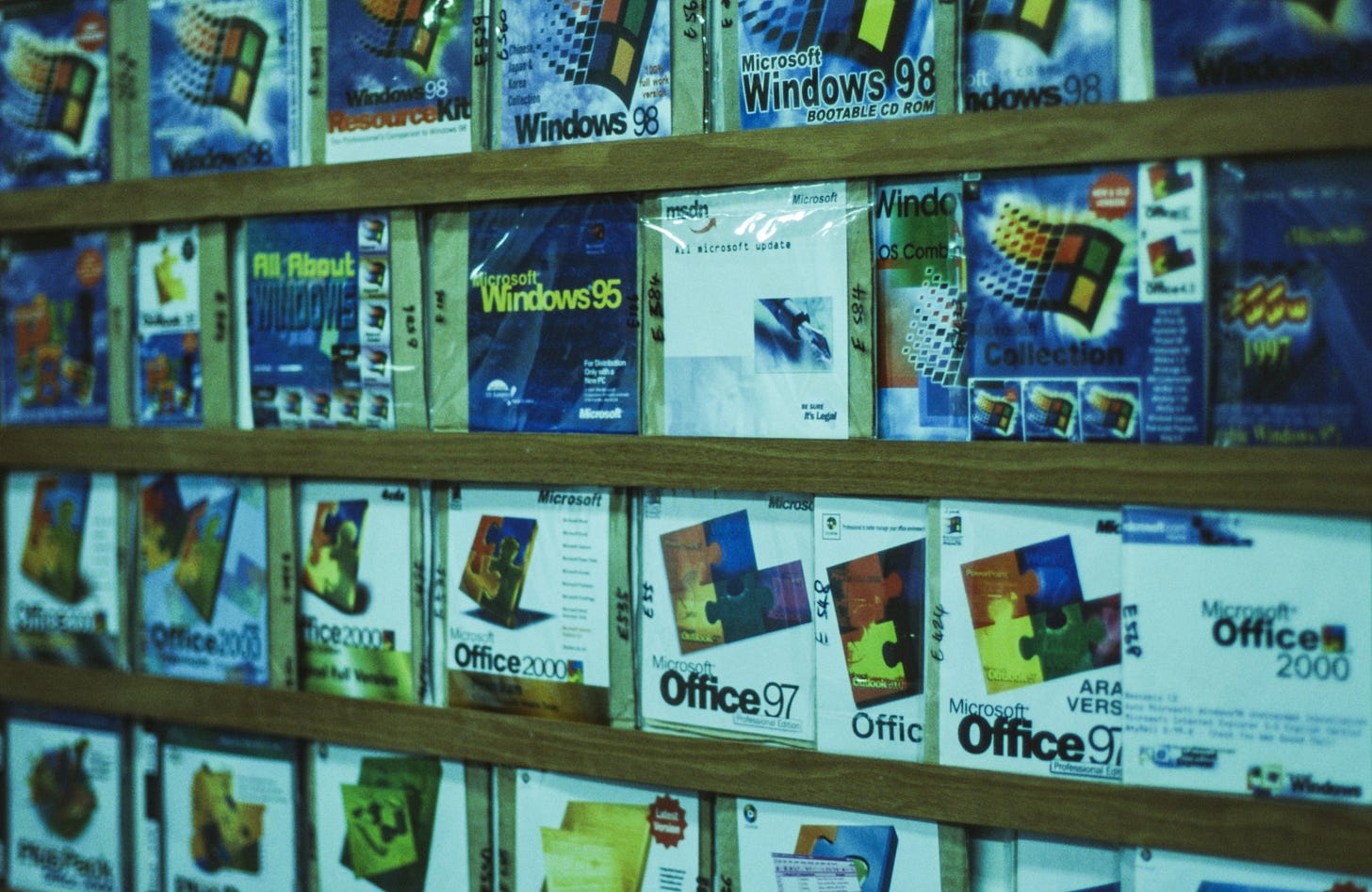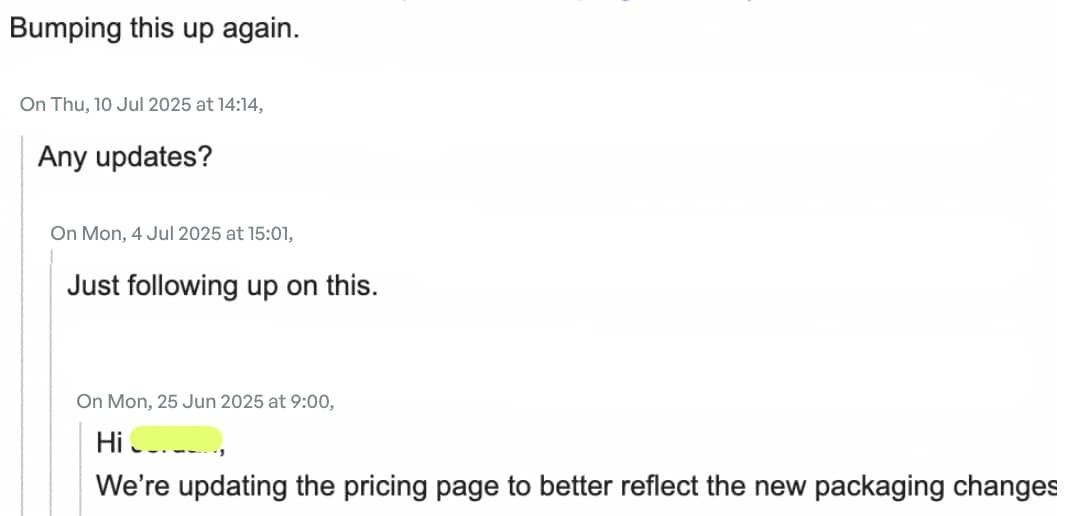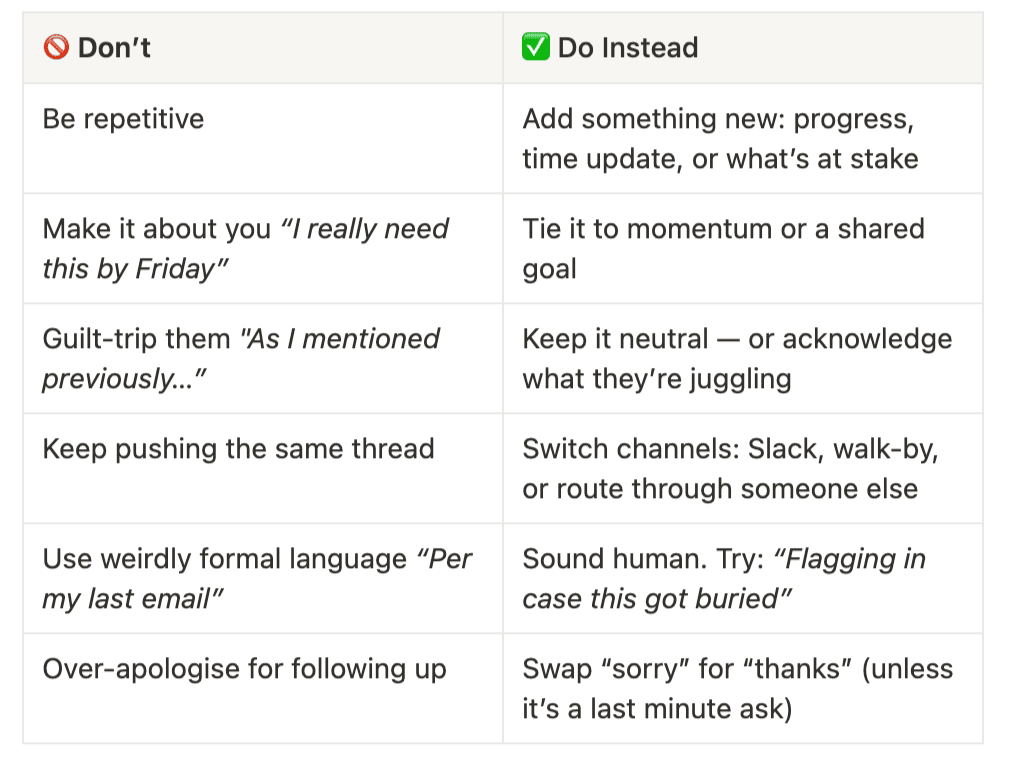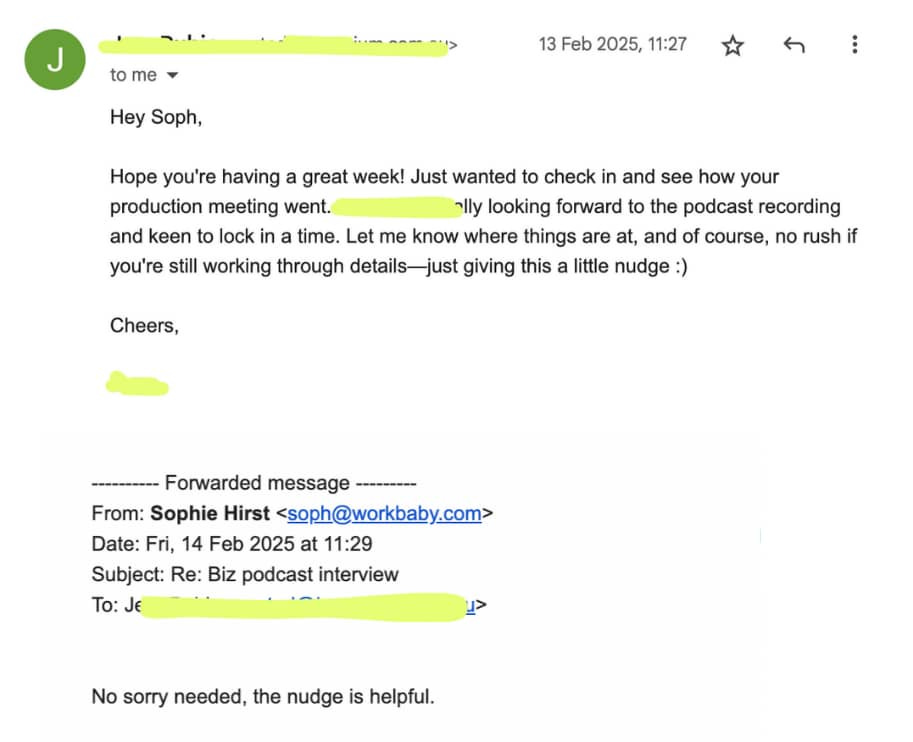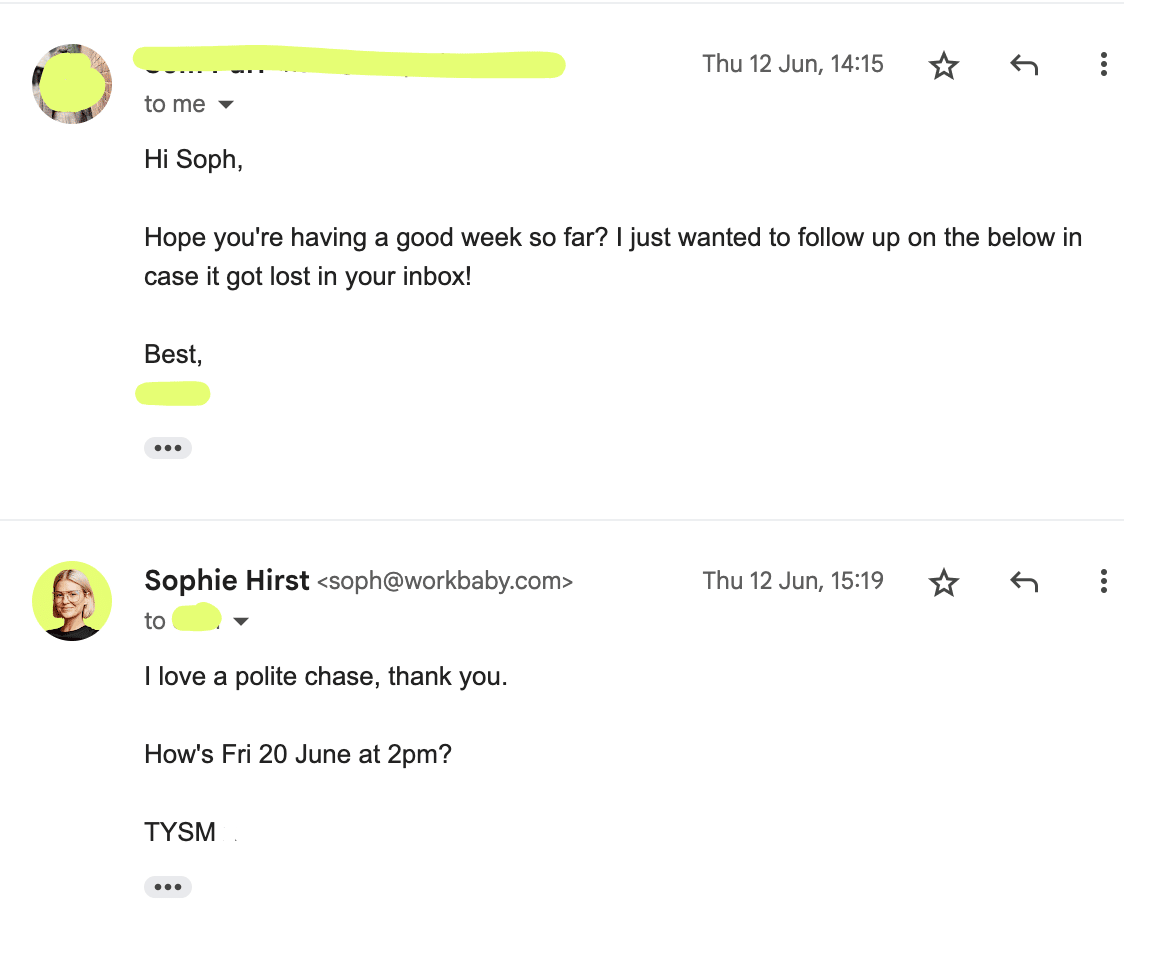How to chase people without being annoying
The art of the follow-up.
Last edition, we covered how to ask for the inputs you need. Now for the art of the follow-up….
If you're reading this Substack, I already feel you’re not the type of person that does this.
You’ve probably had it done to you though.
And it probably made you feel mildly (or very) annoyed. It’s giving “I don’t care enough about this or you, to write a less lazy email”.
Following up is part of the job, but it gets tricky when you know everyone's plates are so damn full. Especially when they're more senior than you.
Here’s what has worked for me:
1. Add something new
It makes you sound thoughtful and strategic.
✅ Progress made on your side
✅ Why their input matters (no one is immune to a little ego boost)
✅ A new constraint or time update
Examples:
“Thanks again - we’ve cracked the first half of the deck, looking good. Can you review Slide 5-9 this week so we can finalise for exec review?”
“Appreciate your eyes on this - your take from the Research side will make sure it’s grounded in reality. Tagged where I’m stuck.”
“Once you’ve signed off, it goes to legal, they usually need 5 business days. If we’re aiming to launch next Fri, need your feedback by EOD tomorrow.”
2. Use momentum words
It makes it feel like shared progress, not personal pressure.
✅ To keep this moving…
✅ Once you’ve weighed in…
✅ So we can wrap this up
Examples:
“This is the last open thread before we route for review — to keep this moving, can you review by EOD?”
“Once I have your input, I’ll finalise and move it to sign-off.”
“Since we’re both on the hook for Friday’s demo, flagging this so we can wrap it up in time.”
3. Change the channel
f you’ve nudged 1-2 times and get silence, try a new channel.
Move from email to Slack
Check their calendar, pick a good time for them, try a walk-by
Example:
“I know you get a lot of emails. I sent a note last week on reviewing the project plan by Fri. Would it help if I summarise it here instead?
For senior leaders, the nudge can go via someone else (EA or one of their direct reports)BUT write the message for them, so it's a simple 'forward' on.
Example (Slack to your manager):
“I’ve nudged James twice re: the onboarding deck — no response yet.
If you think it’s worth pinging him, here’s a quick draft you could forward:
‘Hi James, looping back on the onboarding deck Soph mentioned. She’s ready to finalise, your input in the People section would help close it out. Let her know if you’d like to weigh in, or if she should move forward without.”
4. Read the room
If someone’s clearly underwater or dealing with something urgent, don’t barrel ahead with your standard follow-up.
Acknowledge it
Rescope the ask to make it easier
Examples:
“I know you’re slammed with the product launch this week. When things settle, would love your input on the pricing model"
“Narrowing the ask: can you review this section only? That’s the key piece before we move.”
“If this is better redirected to someone else, happy to do that, LMK who’d be best to pick it up.”
Recapping Don’ts & Dos
Closing thought
Most people aren’t annoyed by a polite follow-up. If something has been sitting in my inbox and I know I have been meaning to reply, it can actually be helpful. It doesn’t need to be perfect if you get the tone right.
(I’d cut the ! and the ‘just’s though 😚)
Stay iconic
Soph ✌🏼



